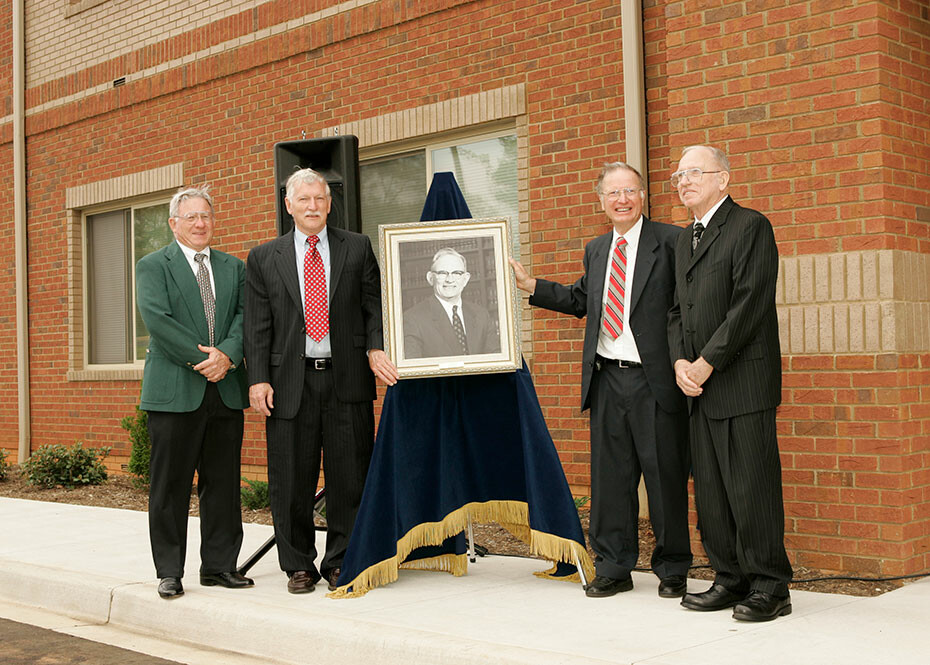SWU dedicates R.C. Mullinax Hall

Apr 11, 2006
Descendants of R.C. Mullinax gathered to celebrate a building that Heather Thore, a student resident of the building, said is known on campus as “The Ritz.” The residence hall features suite-style rooms with semi-private baths.
The university is haunted by the benevolent spirits of university leaders like his father, Rev. Gordon Mullinax said at the dedication of R.C. Mullinax Hall, the newest student residence facility on Southern Wesleyan University’s campus in Central. Rev. Mullinax said he imagines the spirit of his father is pleased with the progress at the university.
Descendants of R.C. Mullinax gathered to celebrate a building that Heather Thore, a student resident of the building, said is known on campus as “The Ritz.” The residence hall features suite-style rooms with semi-private baths.
R.C. Mullinax was a student, faculty member and president at the university, an association with the institution that spanned more than 40 years. During his 20 years as president of the university (1948-68):
- A full-time treasurer-business manager was added, the first full-time non-faculty administrator (aside from the president) in the school’s history (1948).
- Other full-time non-faculty administrators were added in 1949, including a secretary, a field agent (fund-raiser), and the dietician-matron.
- The road in front of the Ad Building was paved, along with the sidewalks (1948).
- “Wesleyan Rural Station” was established when the college became an official branch of the post office in 1949. From 1953-68 Mrs. Helen Mullinax served as postal clerk.
- The first summer school in the university’s history was scheduled (1950).
- The Bachelor of Theology degree (Th.B.) was changed to a Bachelor of Religion (B. Rel.) in 1951.
- The school’s first earned doctorate was added in 1952.
- The academy was accredited by the Southern Association of Colleges and Schools in 1953, a recognition afforded only one-quarter of South Carolina’s high schools at the time.
- At the same time, the Junior College was also accredited by SACS. Previous accreditation by the State Department of Education related to the teacher training program; regional accreditation by SACS was a level of achievement the college had not reached before.
- The Theology Department was accredited as a Bible college by the Accrediting Association of Bible Institutes and Bible Colleges in 1955.
- Gas heating was installed in all of the buildings by 1956.
- The school was approved as a four-year institution for teacher education in South Carolina in 1957.
- A student council formed in 1951.
- The institution changed its name from Wesleyan Methodist College to Central Wesleyan College in 1958.
- He faced tragedy when two students were killed in a dormitory fire in 1962.
- Stuart-Bennett Hall opened in 1963, Folger Fine Arts Auditorium opened in 1964 and a new academic complex opened in 1966.
- The last junior college class at the institution graduated in 1962; the last high school class graduated in 1963.
- The J.B. Childs Athletic Field was completed in 1963.